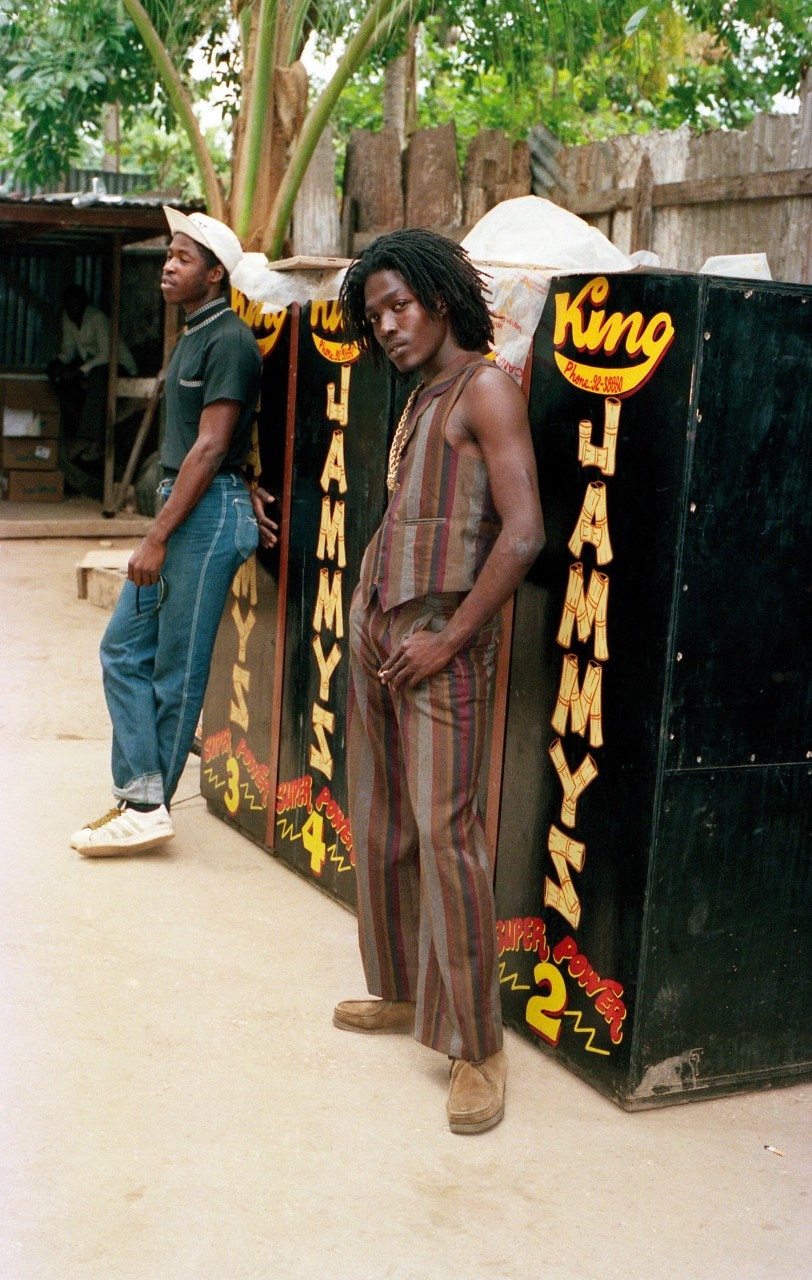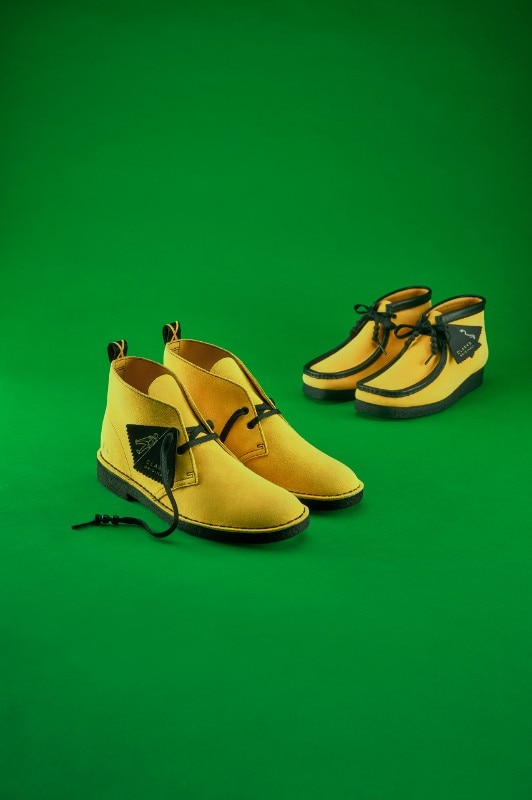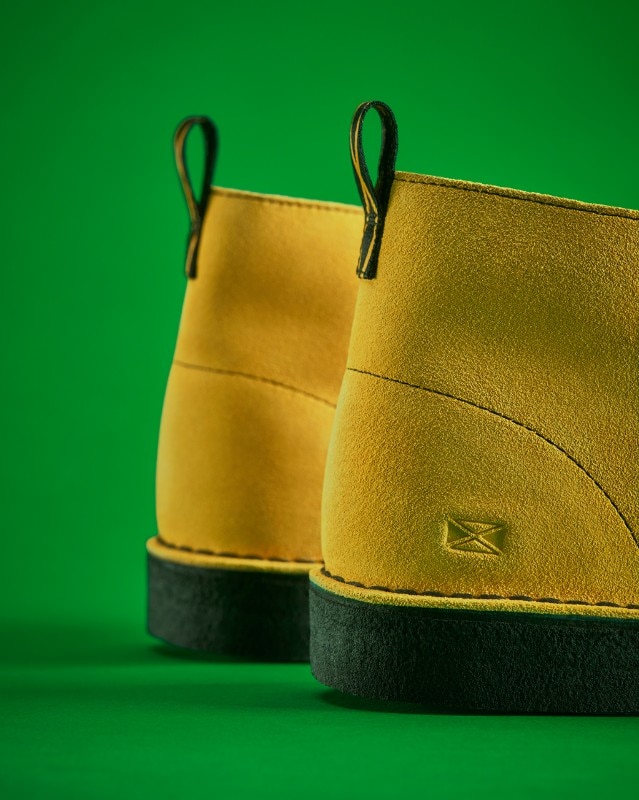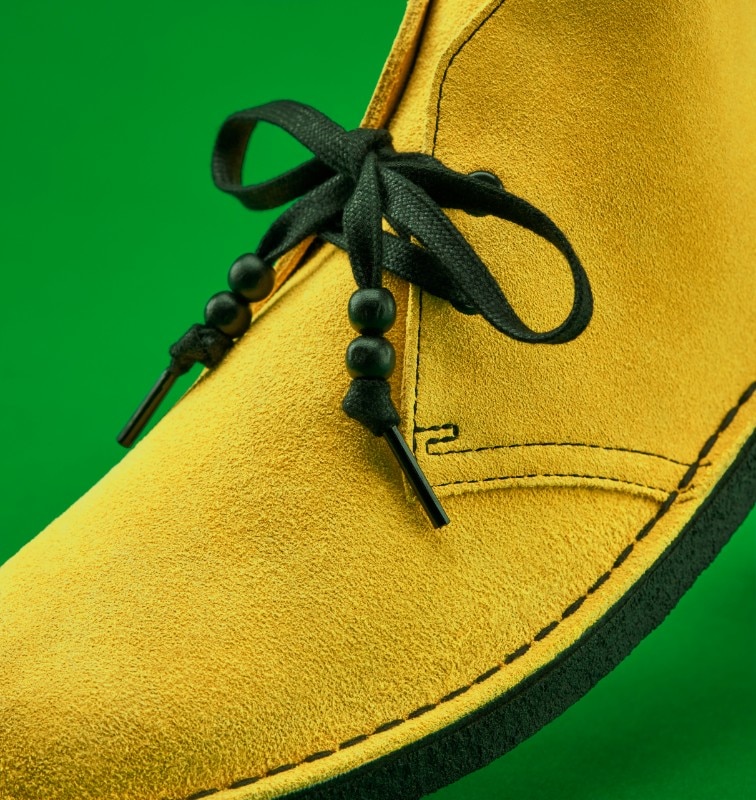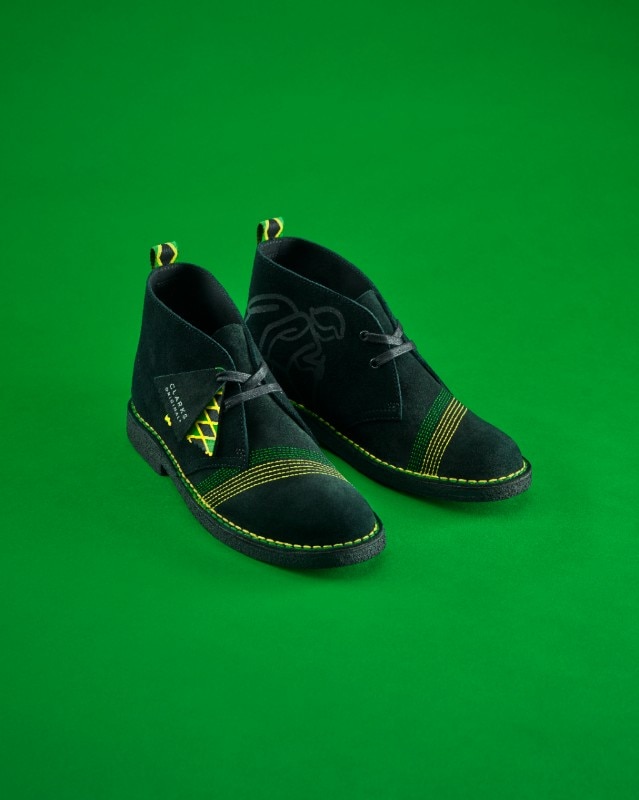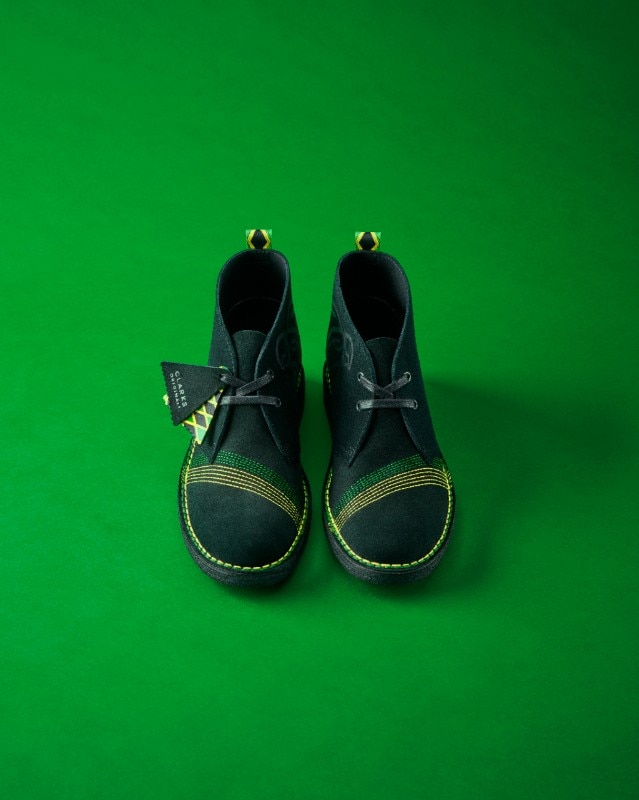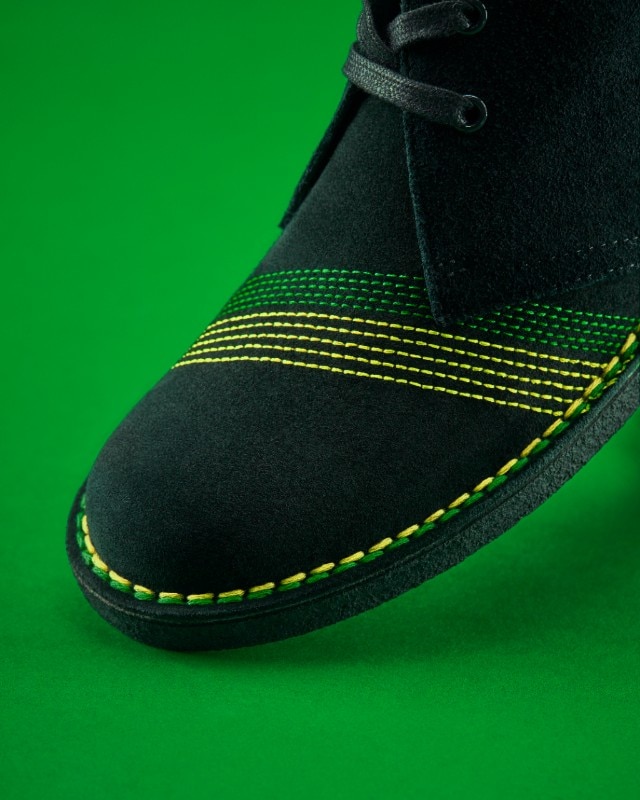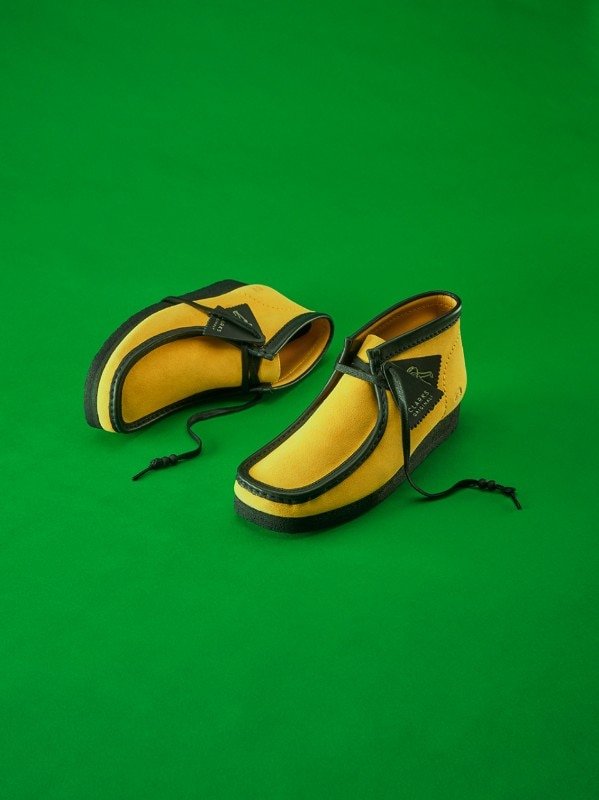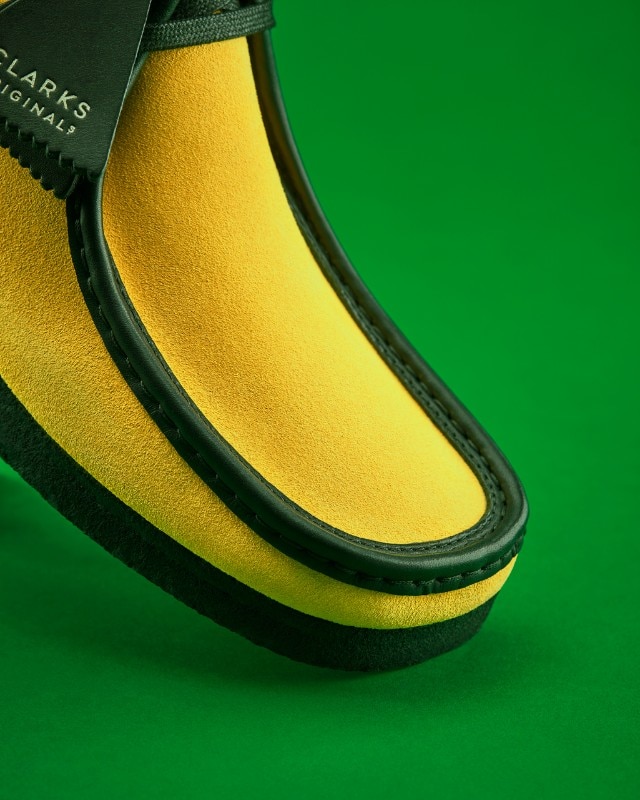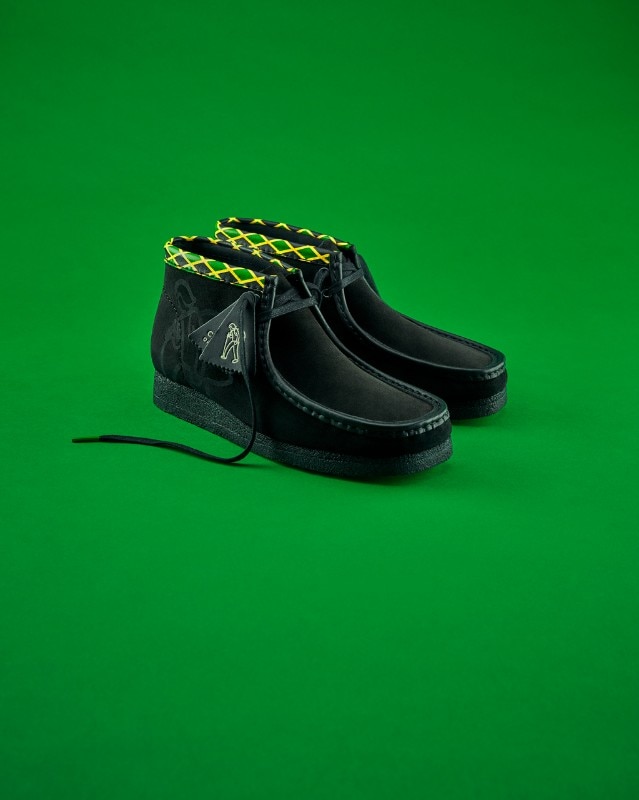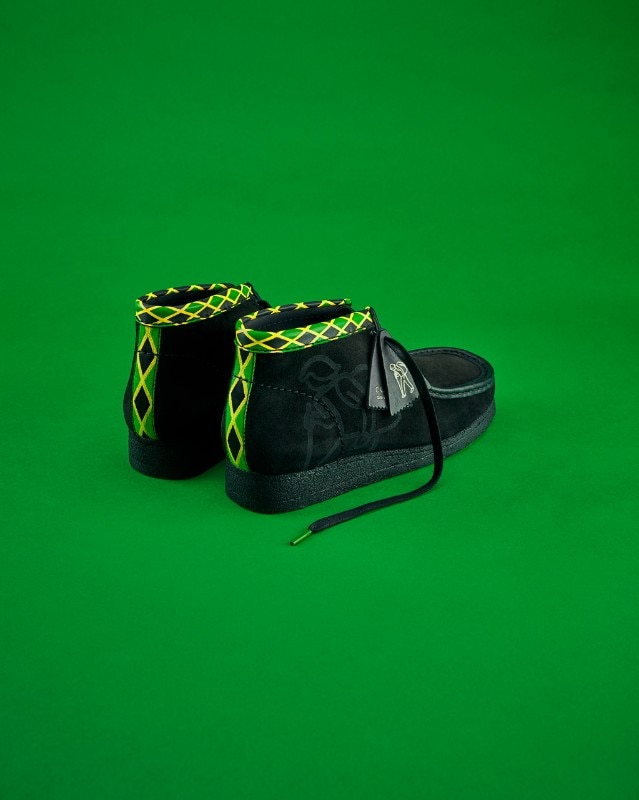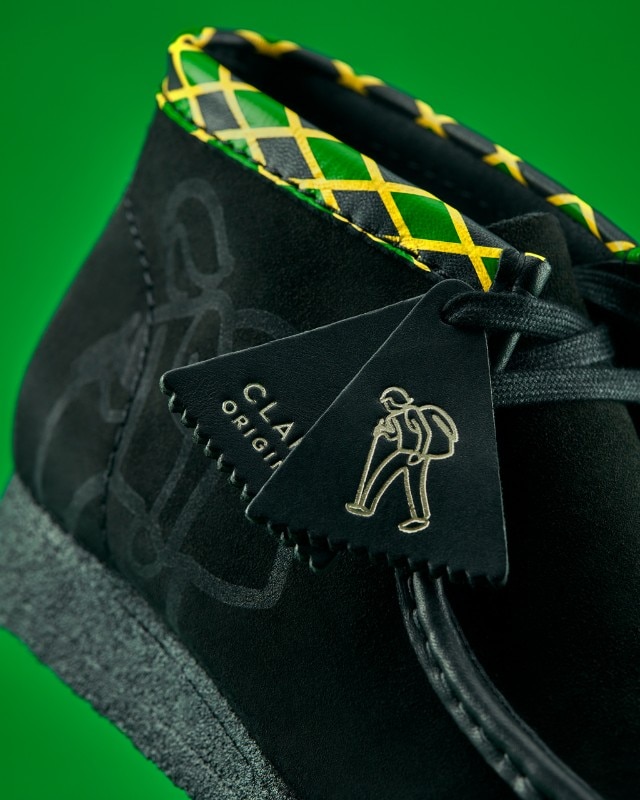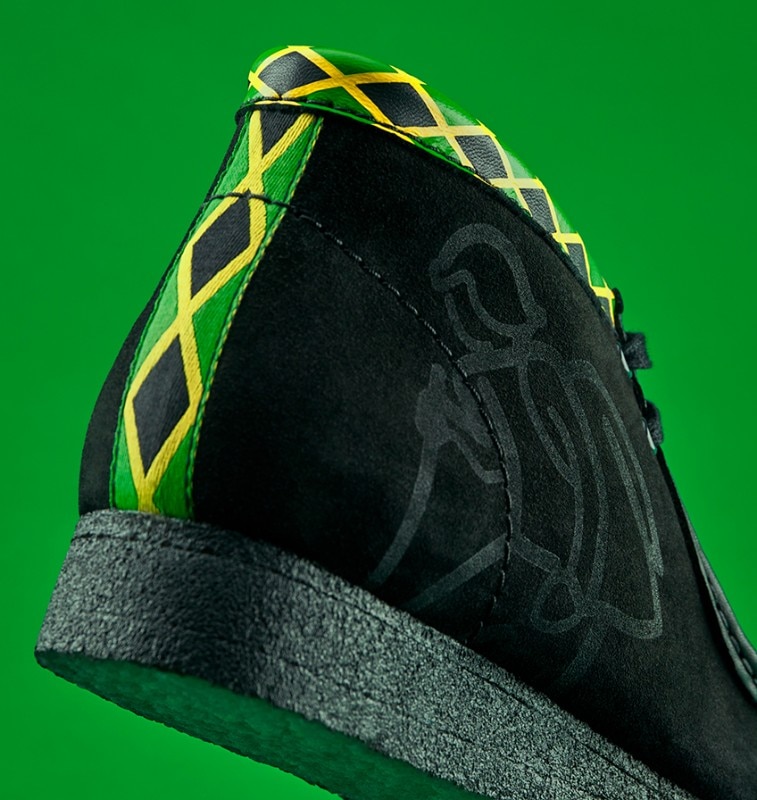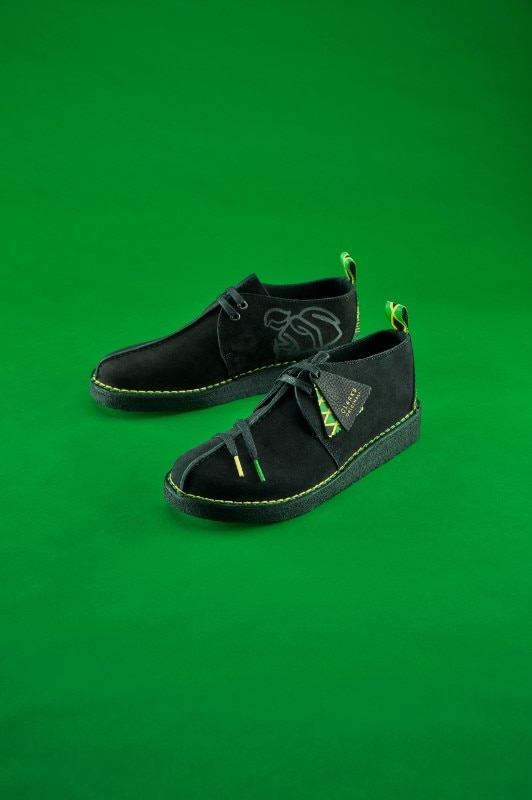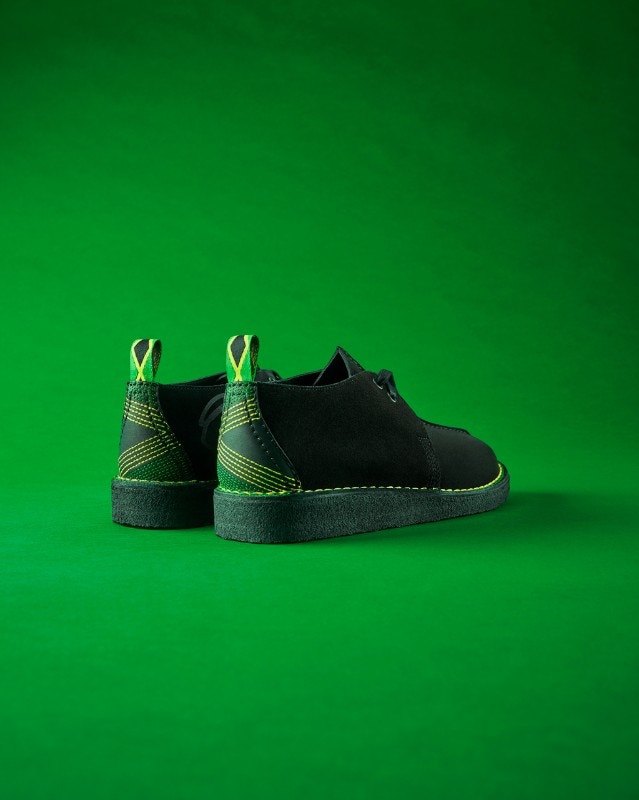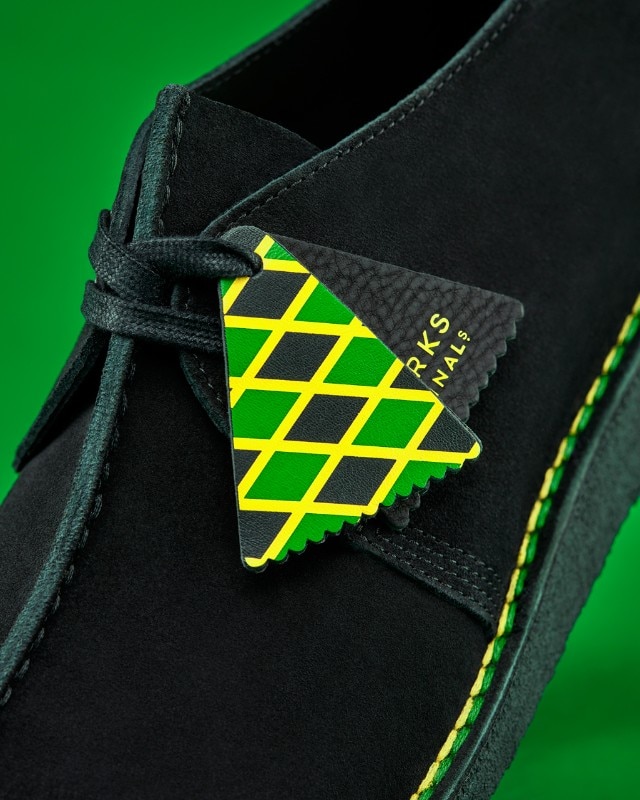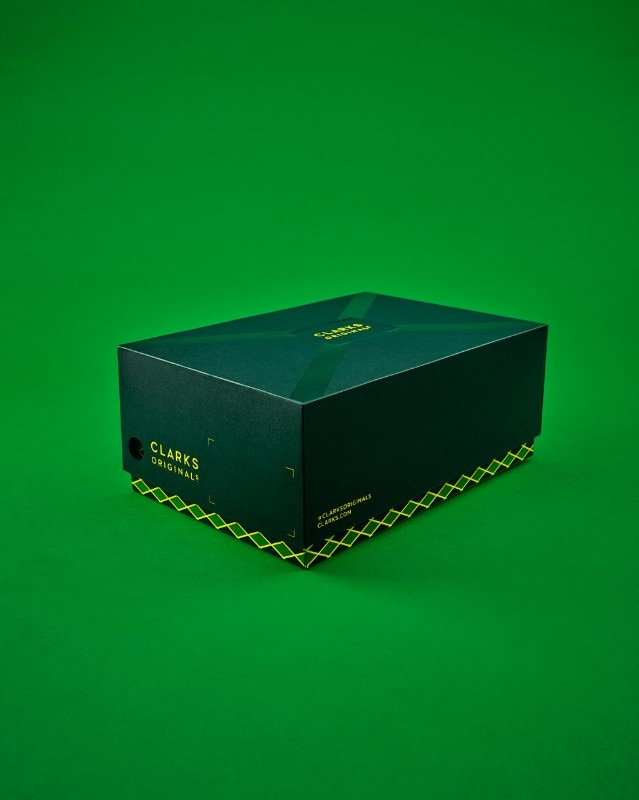If you’re used to spending weekends digging through dusty crates of vinyl or taking any breaks on the job as an opportunity to scroll through the Discogs app, you may have bumped into a series of Jamaican 45rpms nodding to Clarks in their titles. “Hold up your foot and show your Clarks booty,” sang in a twanging Jamaican accent Little John on a 1985 song known, no wonder, as Clarks Booty.
That’s just one of many songs recorded between the ‘70s and the ‘80s bearing titles like Clarks Booty Style by Ranking Joe or Carks Booty Skank by Trinity, featuring lyrics like “Me ah wear Clarks” (Eek-A-Mouse, Wa Do Dem), or adapting covers lyrics to make them suitable to the Clarks fever, like in the case of Little John’s take on The O’Jays soul classic Brandy. This trend never really stopped and resurfaced in 2010, when Vybz Kartel scored a hit with his single Clarks, to which a peak in the brand’s sales on the island followed.
Fashion and music have always developed hand in hand to the point that often are iconic garments to define genres in the collective imagery. That is especially the case with shoes that, on multiple occasion through history, have embodied both identity and stigmas related to youth culture, therefore acquiring a symbolic dimension of their own.
Think to how British policemen used to seize the laces of skinheads’ Dr. Martens boots to avoid them causing havoc in football grounds, to how casuals took so much pride in their sneakers that they would take them off and clap them together while supporting their team, or to how Clarks became a collective staple of Jamaican identity. For this reason, that of Clarks and Jamaica is a story that goes beyond mere fashion, telling more than one could expect about the culturally rich but also troubled love affair between the island and the United Kingdom.
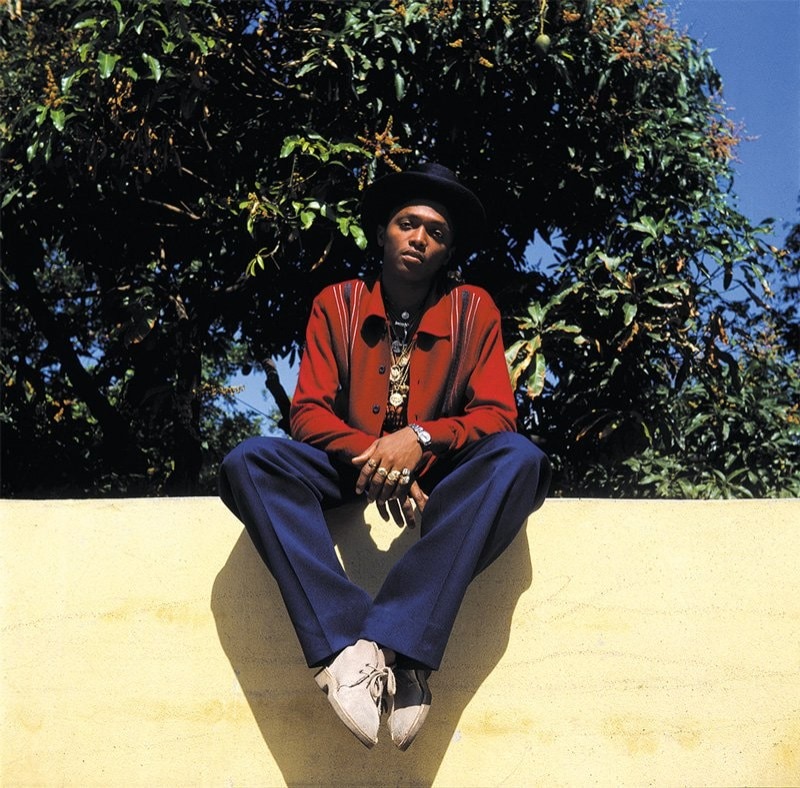
“The phenomenon of Clarks in Jamaica is about a lot more than footwear; it tells the story of the relationship between the island and the UK over 100 years. The first shoes can be traced back to the colonial era, when Clarks were sold in the ‘20s, and seen as aspirational shoes because they came from Britain, similarly to what also happened to other brands from the UK and Europe back then,” explains Matteo Bellentani, head designer of Clarks, in the brand’s historical headquarters in Street, Somerset, just off the ancient Roman thermal city of Bath.
The relationship between the brand and Jamaica found in music its key. The Jamaican artists who went to London to record their cuts in Clapham Junction’s A-Class studio, as soon as they were done on the job, would go to the nearest Clarks branch and splash their advance money on several pairs of shoes of “all sizes, styles and colours, it was the Clarks name that mattered” – writes reggae historian Noel Hawks, who in the 1970s was working as a dub vendor in London, in Clarks in Jamaica a through book on theme curated by researcher and record collector Al Fingers and recently reissued by One Love Books.
“The impact of the Jamaican diaspora, when between 1955 and 1968 about 200,000 people emigrated from Jamaica to the UK, can be seen here too. This community would take the shoes back to the island on their visits, or ship them to family and friends. Jamaicans would also make trips to Street, the small Somerset town where Clarks headquarters are located since its foundation in 1825. Dancehall legend and producer Ossie Thomas describes the experience as ‘a pilgrimage’,” says Bellentani.
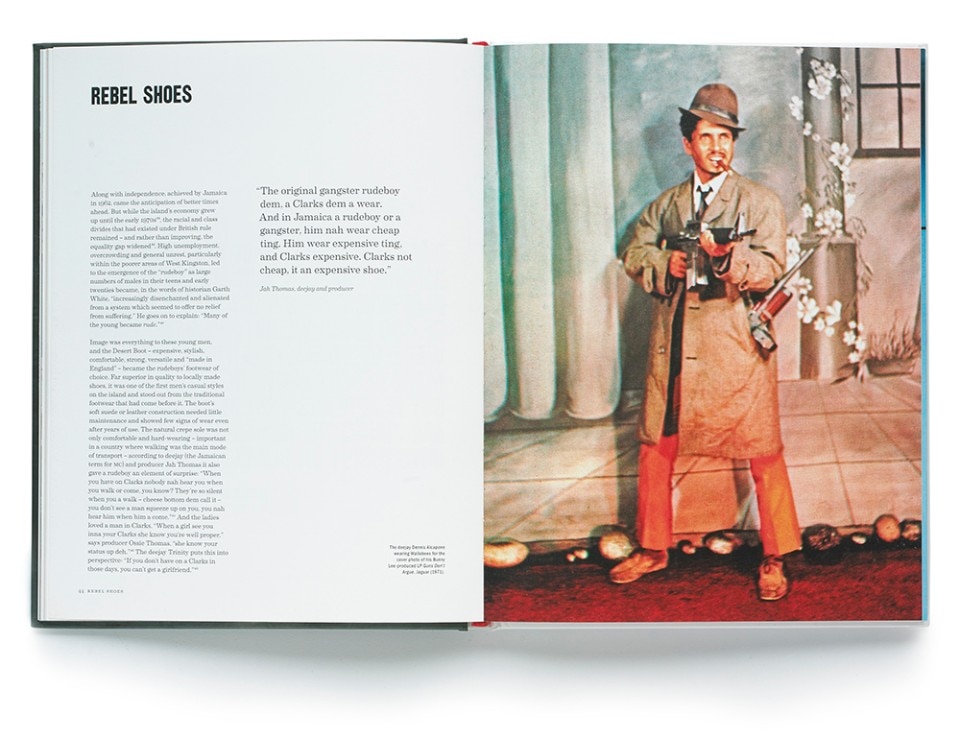
With such desirability within underground scenes, the political connotations of Clarks shoes took no time to follow. Containers of Clarks could not dock in Kingston’s harbour that somebody was already trying to steal as many boxes as possible. Identified with the shoes worn by ‘rudeboys’ – the fans and deejays of ska, rocksteady and reggae music who blended the coolness of American soulmen and hip-hoppers with the street elegance of British modernists – the police would often raid soundsystems looking for youngsters wearing the stigmatised 'Clarks booty’.
“This made the shoes very attractive to the rudeboys of Kingston, at the point that anyone spotted wearing Clarks boots or Wallabees became a target for the police. There are interesting stories about rudeboys walking away from dancehall events barefoot because they had to throw away their Clarks to avoid Police raids,” explains Bellentani.
“As it usually goes, this made Clarks become even more popular and by 1971 Jamaican stores could not keep shoes in stock. They were literally flying off the shelves. Clarks were prominently displayed on the album covers of influential reggae singers and deejays. Then, in the 1980s the romance of Clarks moved from album covers to song lyrics, the first example being Clarks Booty by Little John in 1985.”
The singer himself once said, “Mi love Clarks so much, from early out, that mi nah waan wear nothing else but Clarks”.
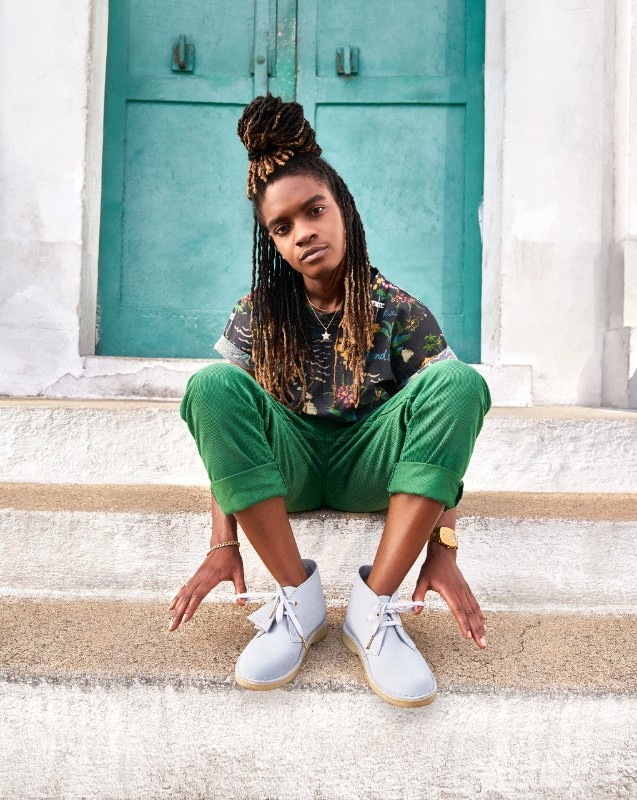
In days when most of the Kingston population moved by foot, models like the Wallabee, the Desert Trek and the Desert Boot – originally conceived as shoes to use by the British army in the colonies or during the African war campaigns – thanks to their crepe sole and smooth ergonomic leather body soon became the most popular Clarks on the island, showing how design can be the bridge between charming aesthetics and pragmatic necessities.
“They were seen as particular mix of British design gentility and commando roughness and durability, practical and comfortable to wear in urban, tropical settings.”
This heritage was taken into account by Matteo when working on the latest Jamaica Pack, a collection dedicated (like its 2009 predecessor) to the celebration of the legacy between the brand and the island’s street culture. Revolving around the three above-mentioned iconic models the line mixed archive research with minimalist decorative elements nodding to Jamaica.
“The design approach has been simple: black soft cow suede uppers with a strong attention to details that resembles the national Jamaican flag, details such as the different sizes of the decorative stitches, coloured lace aglets, black plantation crepe sole – which are also called “cheese” sole in Jamaica –, flag patterned lace fobs, sock liners and tape webbings, and the enlarged ‘trek man’. That’s the iconic artwork of a walking man with a backpack, that appeared for the first time on the Desert Trek shoe in 1971, and has been since called by Jamaicans the ‘bank robber’,” explains Bellentani, “On top of this, we also made it special with the addition of a bright yellow premium suede and limited-edition colourway called Jamaica Bee. The icing on the cake is the packaging: the shoe box design is simply stunning.”
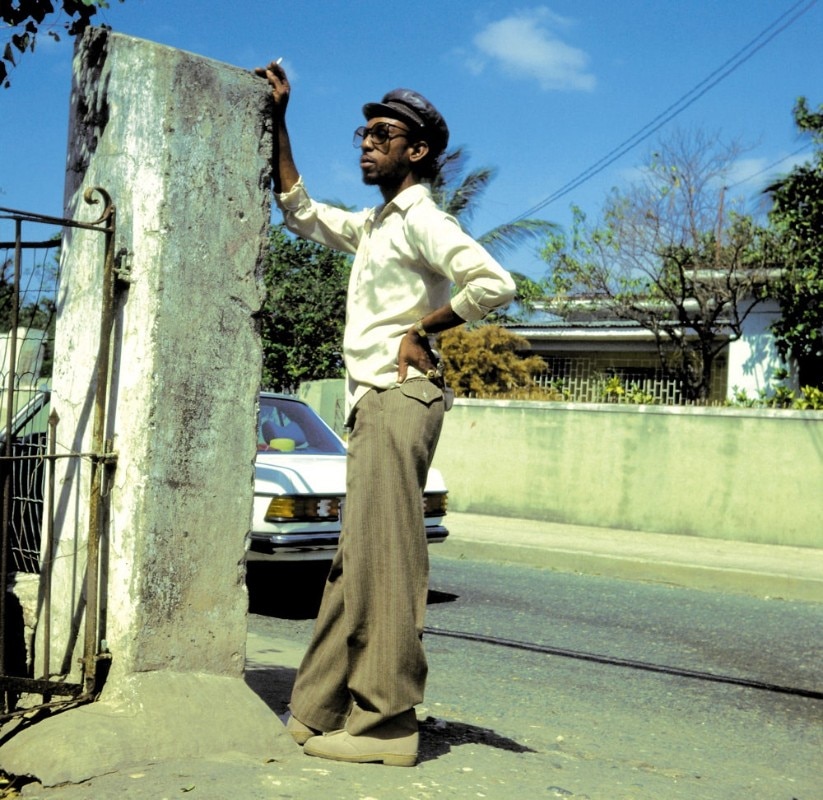
Despite Matteo admits that other lesser-known archive models like the Lugger or the Polyvelts could have been picked for the pack, the choice verged on selected icons because they helped “younger consumers embracing the brand and wearing the shoes with contemporary outfits. Which is also the reason why Clarks Originals is so relevant in the market today as a real alternative to sneakers.
This is the same situation when the Wallabees got popular with the Brooklyn B-Boys in the ‘90s, and, at the same time, in the UK during the Manchester acid house scene. We aim to establish a space between brown and athletic shoes. A nice place to be.”
With the fashion discourse dominated by sportswear, Clarks is currently facing the challenge of harmonising what may now look like formal and historical models with the necessities of younger generations. The work of Clarks – both within and without this pack – is that of preserving a cross-generational legacy deeply ingrained within people without compromising on a new vocabulary of design. Like reggae legend deejay General Saint recalls, “My mother bought me my first pair of Clarks. She was living in England so when she was coming to Jamaica in the summer of ‘75 that’s the first thing I asked her to bring – Clarks.”
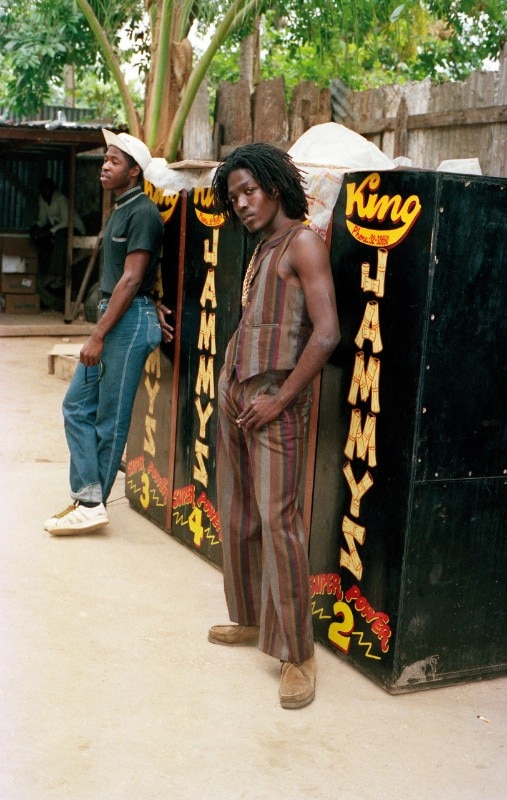
Storytelling therefore has become the way to operate the balanced transition from the brand’s 200-year-old headquarters still treasuring original models, sketches and adverts – “A playground for every footwear designer,” jokes Matteo – to a global, younger, and digital-oriented audience.
“Consumers today are way more ‘educated’ and critic than years ago, they can understand in a few clicks what products have in common with music scenes, with politics and the arts. Hence, at Clarks we are not talking anymore to early rudeboys, mods, beatniks, ‘60s Parisian protesters, acid house clubbers, or ‘90s B-boys. Instead, we are continuing the journey, building our cultural universe for the new generations and making sure that we are still relevant in contemporary cultural scenes.”
This ethos is embodied by the British brand’s recent collaboration with Raheem Sterling, one of the icons of the English football team who was born and raised in the Maverley district of Kingston. “Jamaica’s rich cultural heritage plays a hugely important role in his life,” says Bellentani, “These roots are responsible for his love of Clarks Originals. Community is, in fact, often in the centre of discussion when me and my team approach a new design.
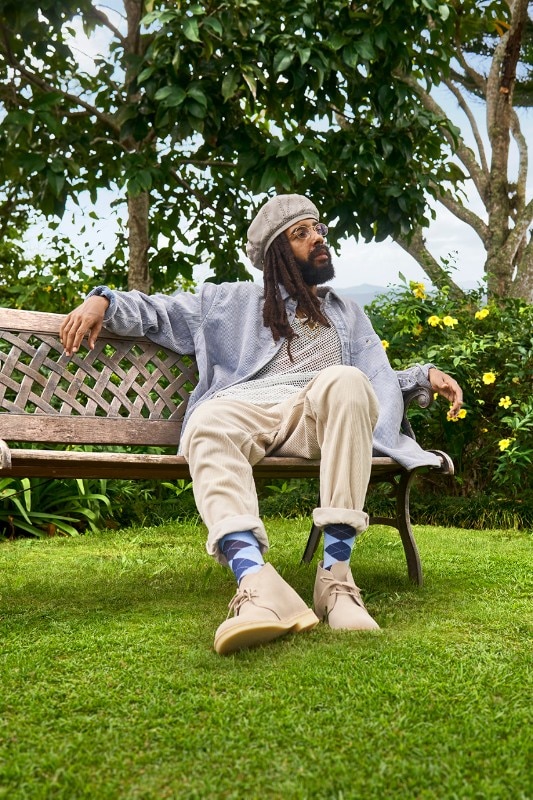
“To ensure we’re giving back to the place that has given us so much, we’re also working with Grammy Award-winning artist Koffee and her Families Rule/MTLT charity, a charity that strives to empower kids through training, mentorship and scholarships.”
Together with the reissue of Al Finger's opus and the release of the documentary featuring Jamaican music heavyweights of the calibre of Protoje, No-Maddz, M1llionz, and Koffee, The Jamaica Pack has highlighted the relevance of the island’s culture in the constant creation of new forms of narration of the British music and fashion heritage.
The collection, in fact, stands as a testament of the role design can have in building bridges between past tales and future scenarios for young rebels and entire communities.
Opening image: singer Junior Reid wears a pair of Clarks Wallabee standing next to King Jammy's soundsystem, Kingston, 1986. Photo Beth Lesser / One Love Books.


